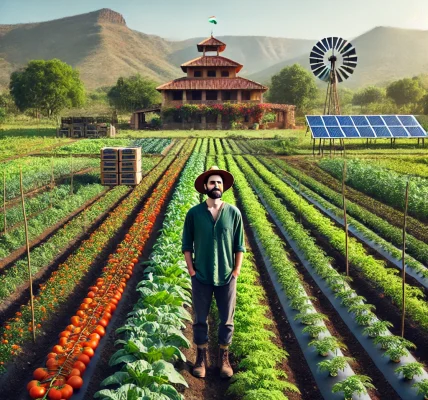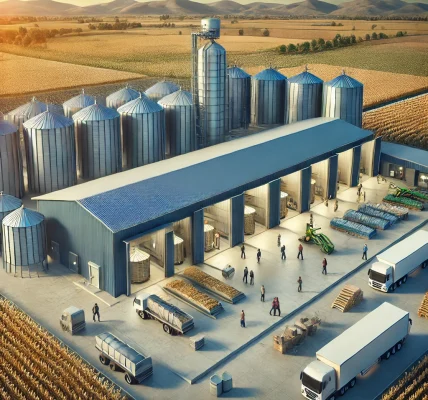Introduction
The Indian government has introduced various subsidies and financial assistance programs to support farmers in seed production and high-yield crop cultivation. These initiatives aim to boost agricultural productivity, ensure food security, and improve farmers’ livelihoods. If you are a farmer or agripreneur, understanding how to claim these subsidies can significantly reduce your production costs and enhance your profits.
In this comprehensive guide, we will explore the different government schemes available for seed production and high-yield crop cultivation, eligibility criteria, application procedures, and important tips to maximize benefits.
Importance of Seed Production and High-Yield Crop Cultivation
High-quality seeds and advanced crop cultivation techniques are essential for increasing agricultural output. By leveraging government subsidies, farmers can access improved seed varieties, adopt better farming practices, and enhance productivity. Some of the key benefits include:
- Increased crop yield and quality
- Reduced input costs
- Greater resistance to pests and diseases
- Enhanced sustainability and profitability in farming
Government Schemes for Seed Production and High-Yield Crops
1. National Seed Programme
The National Seed Programme provides subsidies to encourage certified seed production and distribution. The scheme covers expenses related to seed processing, storage, and marketing.
Eligibility:
- Farmers engaged in seed production
- Agricultural cooperatives and seed-producing companies
Subsidy Benefits:
- 50% subsidy on seed processing and marketing
- Assistance for establishing seed storage infrastructure
2. National Food Security Mission (NFSM)
The NFSM aims to increase the production of rice, wheat, pulses, and coarse cereals by promoting high-yield crop varieties.
Eligibility:
- Small and marginal farmers
- Registered farmer groups and organizations
Subsidy Benefits:
- Up to 50% subsidy on high-yield seeds
- Assistance for seed distribution and training
3. Sub-Mission on Seeds and Planting Material (SMSP)
This scheme supports seed production, quality assurance, and certification processes.
Eligibility:
- Farmers, seed producers, and agricultural cooperatives
Subsidy Benefits:
- 50% subsidy on seed production costs
- Financial aid for seed processing and certification
4. Pradhan Mantri Krishi Sinchayee Yojana (PMKSY)
Although primarily focused on irrigation, PMKSY also supports high-yield crop production by promoting efficient water management practices.
Eligibility:
- Farmers with cultivable land
- Farmer producer organizations (FPOs)
Subsidy Benefits:
- Grants for micro-irrigation systems
- Financial assistance for modern farming techniques
5. State-Level Agricultural Subsidies
Several state governments offer additional incentives for seed production and high-yield crops. Farmers should check with their respective state agriculture departments for localized subsidy programs.
Step-by-Step Guide to Claim Subsidies
Step 1: Check Eligibility
Before applying for any subsidy, farmers should ensure they meet the eligibility criteria outlined by the respective government scheme. Eligibility typically depends on factors such as land ownership, type of crop cultivation, and membership in farmer groups.
Step 2: Gather Required Documents
Most subsidy applications require the following documents:
- Aadhaar card and PAN card
- Land ownership or lease documents
- Bank account details (linked with Aadhaar)
- Seed purchase invoices and certification documents
Step 3: Apply Online or Offline
Farmers can apply for subsidies through the following channels:
- Online Application: Visit the official websites of schemes such as NFSM or SMSP and fill out the online application form.
- Offline Application: Visit the nearest agricultural office or Krishi Vigyan Kendra (KVK) to submit a physical application.
Step 4: Verification and Approval
After submission, government officials will verify the documents and assess the farm’s eligibility. This may include site visits and inspections.
Step 5: Receive Subsidy Funds
Once approved, the subsidy amount will be credited directly to the farmer’s bank account or provided as a reimbursement for eligible expenses.
Tips for Maximizing Benefits
- Stay Updated: Regularly check government portals and agricultural offices for new subsidy announcements.
- Maintain Proper Records: Keep detailed records of seed purchases, cultivation methods, and financial transactions.
- Join Farmer Groups: Membership in farmer cooperatives and producer organizations can increase your chances of receiving subsidies and support.
- Seek Expert Guidance: Consult agricultural extension officers or experts at KVKs for assistance with subsidy applications and best farming practices.
Conclusion
Government subsidies for seed production and high-yield crop cultivation provide significant financial relief to farmers, enabling them to adopt advanced agricultural techniques and improve productivity. By understanding the eligibility criteria, application process, and best practices, farmers can successfully claim subsidies and enhance their farming operations.
For more information, visit official government websites or consult local agricultural authorities. By taking advantage of these schemes, you can ensure a more profitable and sustainable farming future.




